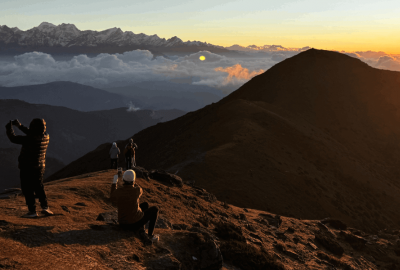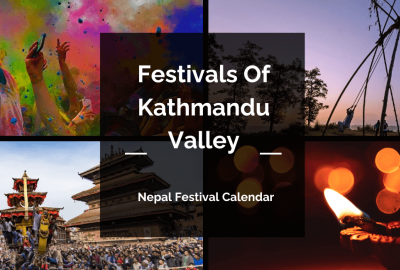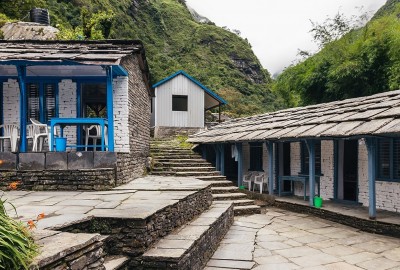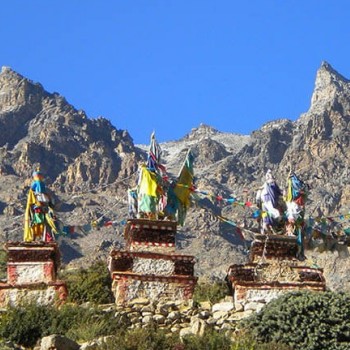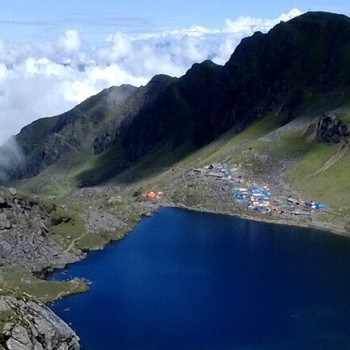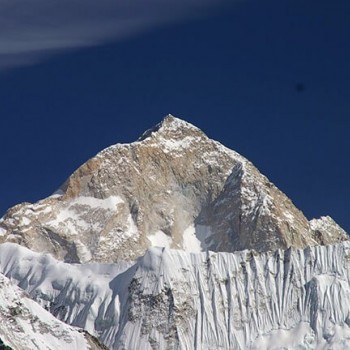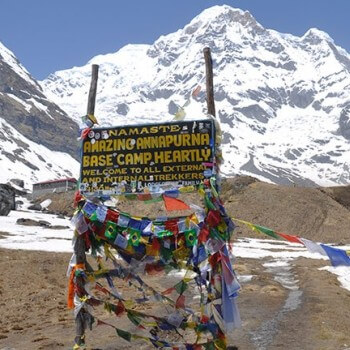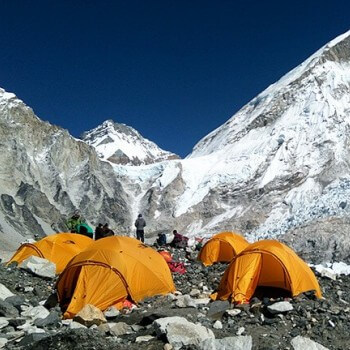Best Time to Visit Nepal
While Spring and Autumn are considered the best seasons to travel to the Nepal Himalayas, each season has its own positives and negatives in regards to which part of the Himalayan regions you wish to visit.
Spring Season (Mid March-May)
While this season brings warm weather along with it, in higher altitudes it also brings along sporadic storms and snowfall. The distant view is usually covered up towards the end of March by the fumes caused by the smoke coming from local fires and dust carried along from the plains of India. Also, the region below 3000 ft gets warmer. As the weather and the temperature are more stable during spring, it is the second most favored time to go trekking in the Himalayas region of Nepal. The weather is optimal for treks in Nepal’s Himalayan regions and it is the perfect time to cross high passes such as Kongma La, Thorung La, Larkya La, and trek to high viewpoints of Nepal like Gokyo Ri and Kala Pattar in the Everest region.
The major inconvenience about spring is that as sometimes the weather gets cloudy, the views of the mountains might be veiled by it. Moreover, during this time, the season gets quite busy so along the way you will encounter many travelers from different countries and if you want to enjoy nature by yourself, it is quite hard to do so.
Autumn Season (Mid September - November)
While the nights are cold in the mountains during this time of the year, the weather during the daytime is quite pleasant. Temperature ranges from 20°C during the day to perhaps -10°C at night at higher altitudes. The clouds build up during the afternoon and disappear before night leaving clear morning skies and starry night skies. This is the most preferred season for trekking as the skies are clear, temperatures are steady and the weather is usually stable.
The vibrantly bright colors expressed by nature in the form of growth of vegetation and the dazzling colors make it an amazing time to visit the Himalayas region of Nepal. You will meet lots of trekkers along the way as this season is the most favored one.
Also Read: The Ultimate Guide to Best Time to Visit (With Weather Data)
Winter Season (December - Early March)
During January, February and March there is heavy snowfall in the higher altitudes of the Himalayan regions. In the Western hills of the Himalayas, the winter rains are much more prominent. While it is much colder than other seasons, it still is a good time to visit the Himalaya regions in Nepal as the glistening sun shows from time to time to reveal clear skies.
The main drawback of winter is that you can not visit the high pass crossings as the weather will be too cold and you will be taking quite a risk. It is perfectly fine to trek in the middle hills and the lower Himalayan foothills though. While it is cold during the nights, the days are quite comfortable. Nowadays trekking in Langtang, Everest, and Annapurna regions and climbing Mera peak, Chulu, and Island peak has become quite popular.
Summer Season (June - Mid September)
June comes along rain which means you can pretty much expect mist, rain, and fogs every day of the season, but clouds deplete sometimes and you will get the dazzling views of the mountains. During this time there should be an abundance in the vibrancy of floras. The main setback of this season is that the weather is always unpredictable and the typical signs of an upcoming storm like the fall in barometric pressure and cirrus clouded sky can be deceiving. This season is recommended only to the seasoned trekkers and is not at all suitable for beginners as the trails are often leech-infested and muddy. The mountains are veiled by the clouds during this time. The best place to visit during summer is the “rain shadow” area of the Himalaya such as Nar Phu and Upper Mustang.
Getting to the Himalayas in Nepal
Nepal has one international airport which is located in Kathmandu. You can either fly directly from your country or come hereafter visiting India through the borders. Your next step is to figure out where you want to go first. Pokhara and Lukla are two of the most famous trekking hubs among many and they can be used as a starting point for many treks in the Annapurna and Everest region. You can get to Pokhara and Lukla by public vehicles or hire a private one. You also have the option to fly to both of these destinations but you should be aware that the Lukla flight is known as the most dangerous flight in the world. It is probably called that due to the airport’s location and its elevation of 2,895 meters.
The weather is also unpredictable resulting in turbulence and delayed flights and the runway is tiny, being just over 500 meters long. The experience during takeoff is often described as a similar sensation to being on a roller coaster. Before booking your flights, you have to make sure that you will not end up in the wrong destination as it will cause a setback to your travels so make sure to look at your itinerary.
Off the Beaten Places from Nepal Himalayas
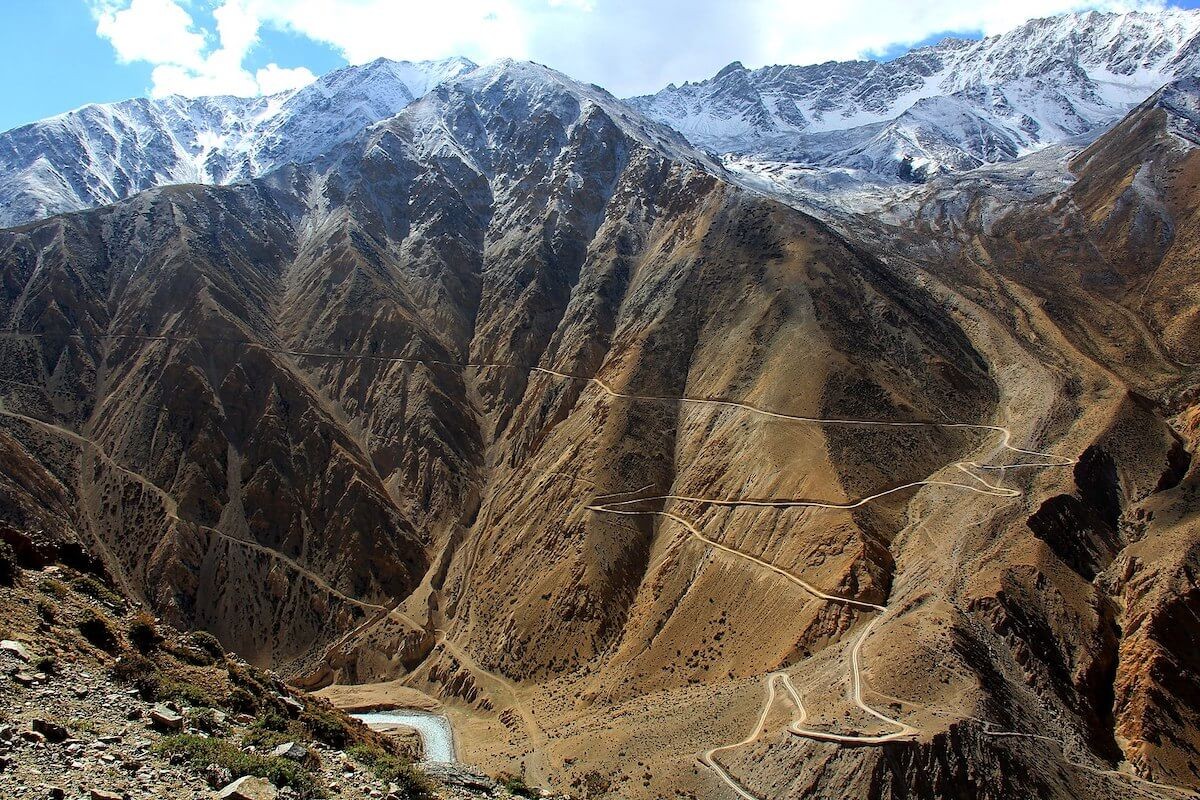 Image Source: Sherparinji
Image Source: Sherparinji
Untouched by the motorable roads from major cities of Nepal, Humla lies in the far western section of Nepal and is one of the most off the beat districts in Nepal. Contrarily, by the connection of high Himalayas road on Tibet, it leads beyond to Mount Kailash and Manasarovar Lake. As Humla is part of the Karnali Zone, it has excellent trails meant for trekking within it. However, due to its close proximity to Tibet and geographical remoteness, most parts of the area are classified as a restricted region.
To get to Humla, the easiest thing you can do is to take a flight to Simikot from Nepalgunj and start trekking. The Immigration Department of Nepal issues all the necessary trekking permits required to trek in Humla. The permits have to be issued in advance. Buddhist people inhabited the Northern part of the district while a Hindu majority dominates the Southern part. With it bears a windy terrain and a deserted landscape, it is a splendid place for adventurer hikers. The Great Himalayan trail also ends here.
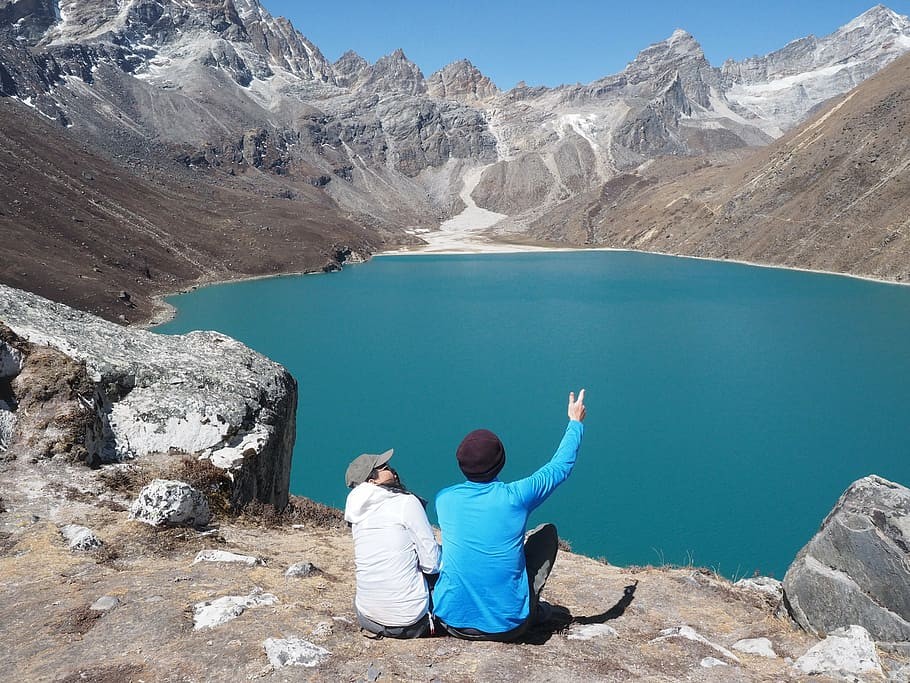
With Lhotse and Everest situated on its border towards the Tibetan Side, Khumbu Valley is a major connotation of the Everest region and has a passage to views of Mount Makalu and Mount Cho Oyu. Gokyo is a valley neighboring Khumbu valley and it holds a series of six high alpine lakes. The names of the lakes are Gokyo 1st to Gokyo 6th. The gateway for both Mount Everest Base Camp and Gokyo valley is Namche Bazar. Towards the Gokyo Lakes from Namche Bazar is Dole. Known for its excellent views of Mount Thamserku and Kantega, Dole has an approximate range of 4200-meter elevation from sea level. The bonus is the beautiful meadows meant for yak herds. In Gokyo, there is no permanent settlement as during the high season most local hotel owners stay at Dole. The families of the hotel owners usually stay around Khunde and Khumjung or Phortse Village.
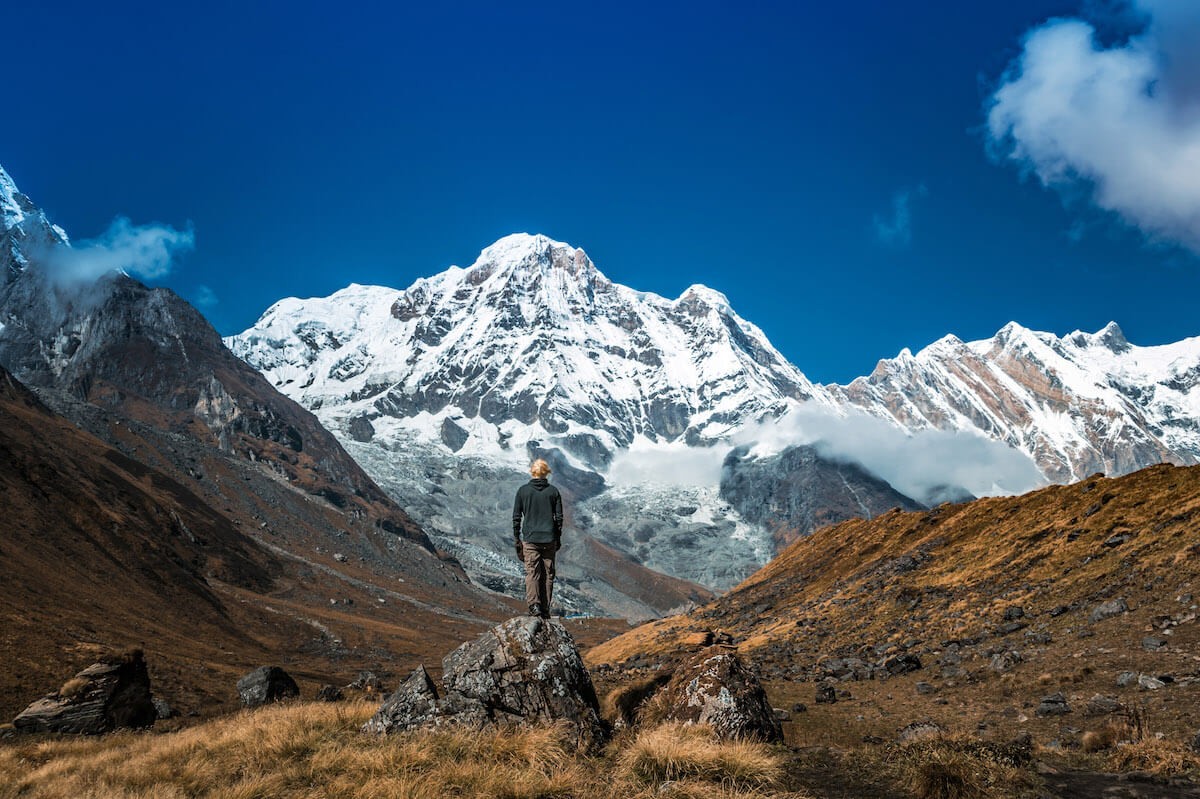
Annapurna Base Camp Trek or Annapurna Sanctuary Trek is a world-renowned trekking destination which offers multiple trail options with ones starting from Jhinu, from Dhampus or from Naya Pool and passing through Ghorepani Poonhill. Chomrong is the meeting point no matter which trail you pick. From there a single trail will get you to the Base Camp. Along the trail is one of the biggest settlements after Gandruk. The settlement is mostly dominated by local Gurung people who are there to make a living and usually belong to nearby villages. After this, the hotel areas are Sinwa, Dovan, Himalayan, Fishtail Base Camp and finally Annapurna Base Camp. With Mount Fishtail right in front of the village, the gorgeous view of Jhinu down below can be seen to the Madi River.
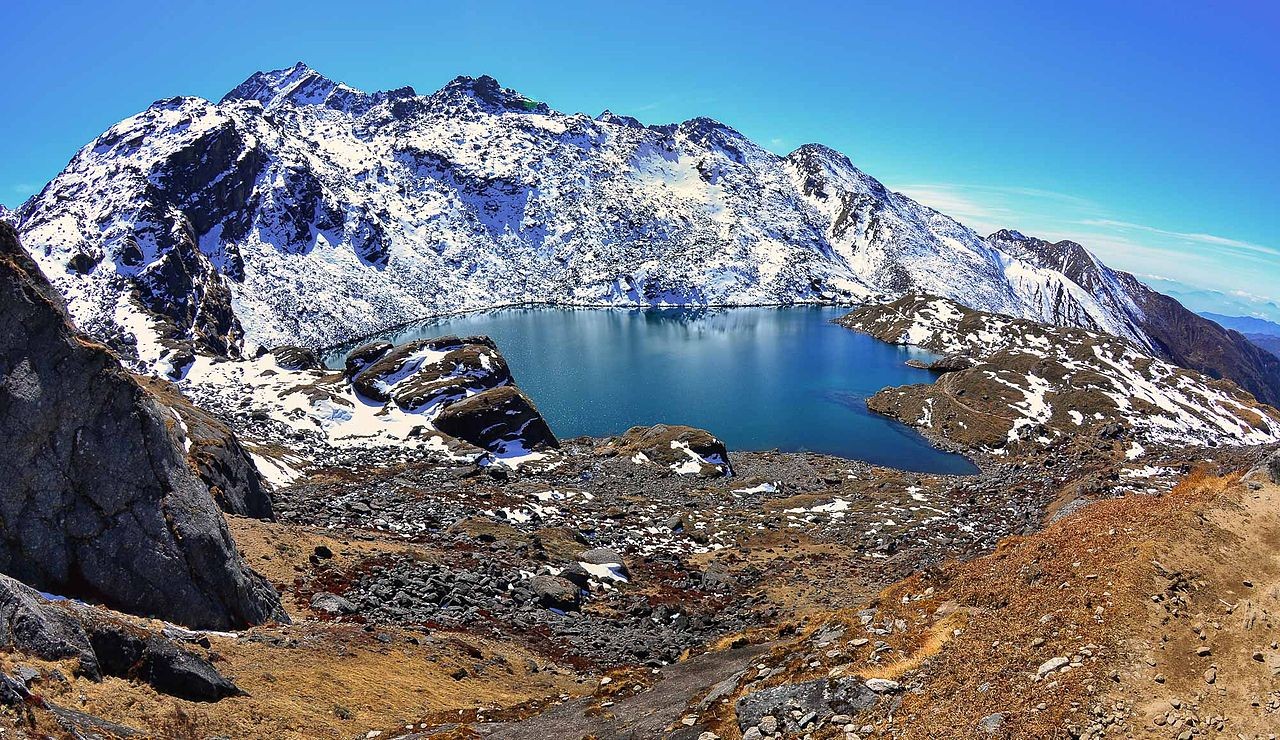 Image Source: Q-lieb-in
Image Source: Q-lieb-in
With Langtang National Park located in it, Rasuwa District is well known for the Gosaikunda Lake trek and the Langtang Valley. Due to its religious importance, twice a year a big celebration is observed at the Gosaikunda Lake area. During the celebrations, there will be overcrowding in the trail as well as the teahouses. You can access the trekking trails through the Helambu side or Dhunche. Gosaikunda Lake is the biggest and the most important lake among the 108 lakes situated in Gosaikunda Region. An excellent view of the Bhairab Kunda can also be observed from the settlements next to Gosaikunda Lake. Saraswati Kunda is the first lake you will pass by on the way from Dhunche, followed by Bhairab Kunda and Gosaikunda. An hour walks away from the hotels in Gosaikunda lies Surya Kunda. You can either go back towards Langtang Valley or continue towards Helambu after exploring all the lakes.
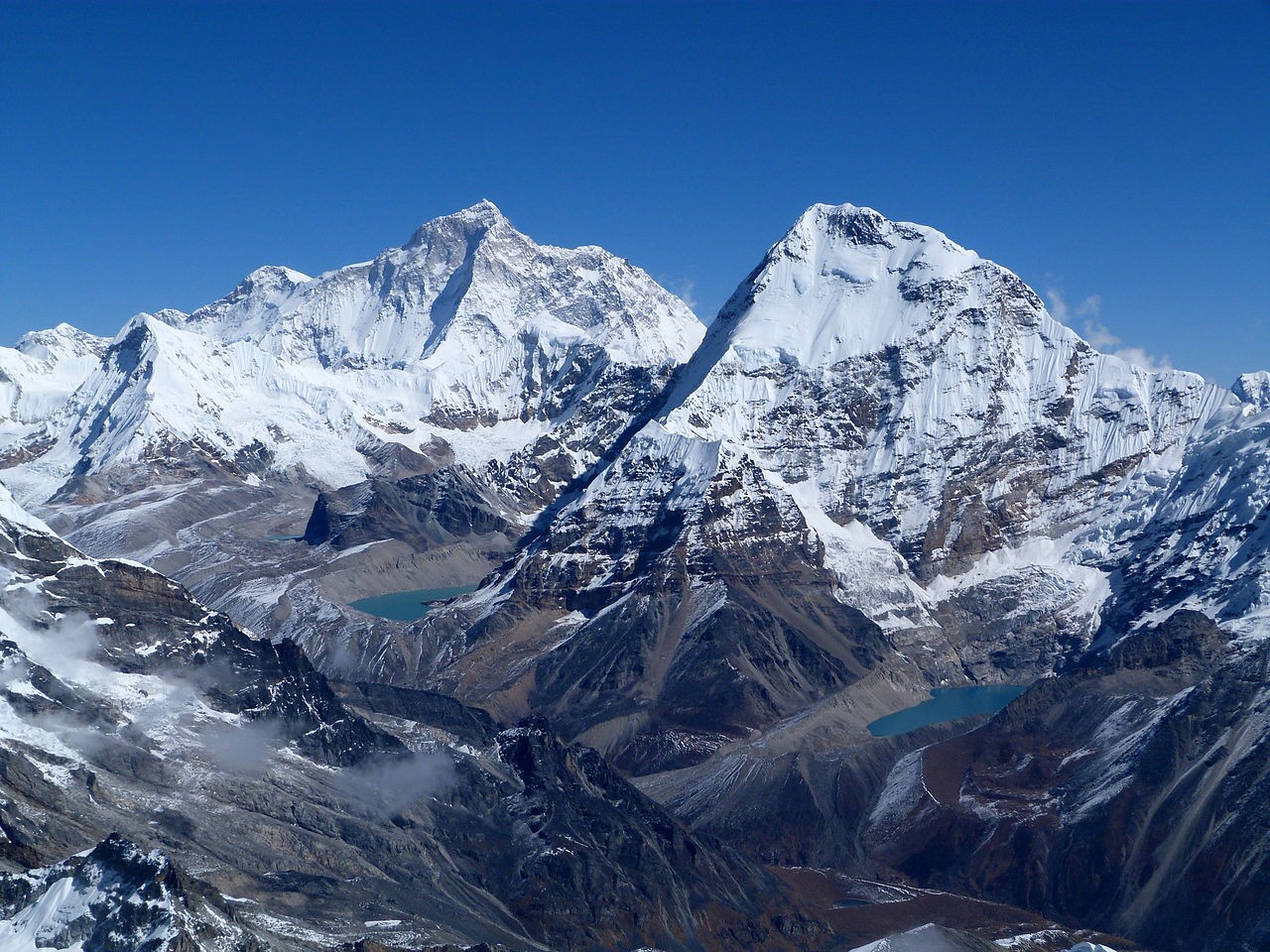 Image Source: Craig Taylor
Image Source: Craig Taylor
Residing between Mount Kanchenjunga and Mount Everest, Mount Makalu is the fifth highest mountain in the world. With the world’s largest mountain face in the world, Mount Makalu is probably one of the most difficult mountains to ascend. Makalu Base Camp area was first explored by a foreigner named Shipton hence there is one pass in between Makalu Base Camp and Tashi Gaon named after him called “Shipton La”. Makalu Barun which is the world’s deepest valley, as well as one of the areas facing the highest rainfall in Nepal, has an abundance of flora and fauna. With seasonal stone huts scattered throughout the trail and well preserved Sherpa culture, Makalu Region is an isolated beauty full of adventure. On Makalu Base Camp’s northwest side lies the world’s most strenuous as well as technical trekking trails. Sherpani Cole and West Cole towering 6200 meters above sea level are connected by the trail to Chukung (Khumbu Valley).
4 Tips for Planning a Trip to Nepal
Planning is something that must be done before visiting the Himalayas in Nepal as it is an important part of the trip. Among the four seasons experienced by Nepal, the monsoon season is less crowded because of the weather conditions. And autumn season gets crowded because of favorable weather conditions and the accommodations get pre-booked out as tourists from all around the world come to trek up to Annapurna and Everest.
Accommodation
As there is a significant increase in tourism within the area, you will find plenty of hotels, homestays, tea houses and guest houses where you can stay during your trip. During peak season, it is recommended that you book your accommodation in advance as most of them tend to be filled up and there is a chance that the prices may skyrocket if fewer rooms are available.
Altitude Sickness
While trekking is a fun adventure, there is a danger to it related to altitude scaling. The dangers might be mild or extremely severe. The danger is called Altitude sickness or Acute Mountain Sickness (AMS). Ascending altitudes over 3000 meters will affect the trekkers from lesser to a greater extent and that is something that has to be understood by trekkers. The atmospheric pressure falls the higher you go and there is less oxygen present hence resulting in altitude sickness. The symptoms of severe AMS can develop and take effect if mild symptoms are ignored.
Packing Gears
Trekking boots and a comfortable backpack, usually 30 to 50L in volume, are items that are a must for trekking. To avoid discomfort and blisters on the trail, make sure to break in your boots and get comfortable with it. Decent quality clothes are sold for quite cheap in Kathmandu and Pokhara so if you forget something, you have the option to buy it here.
Also Read: Rent Trekking Gears in Kathmandu and Pokhara
If you have a few days to spare before starting your trek, you can buy or rent the trekking gear you need in Nepal and avoid the hassle of having to lug everything through customs. The shopkeepers might try to upscale the price so make sure to bargain before purchasing something. In the street markets of Thamel i.e. the tourist area in Kathmandu and Lakeside in Pokhara, you will be able to find gloves, sleeping bags, trekking pants, headlamps, base layers, fleece and down jackets, socks, hats, and buffs. A base layer that is combined with fleece or a woolen mid-layer, water wicking, quick-dry shirts and pants, and a hard shell on top is a good idea.
A bar of soap to wash the required garments is recommended for trekkers who are going on trips lasting longer than a week and probably need to wash their clothes. You can air dry them overnight or keep them in the sun.
Permits
Permits are required for all foreign trekkers who wish to trek in Nepal. You can get your permits either in Kathmandu or Pokhara. The trek you want to take up determines what kind of permit you will require.
Generally, trekkers need to acquire a TIMS (Trekkers Information Management Systems) card which is available at Nepal Tourism Board offices located in Kathmandu and Pokhara or at the TAAN Secretariat offices in Pokhara or Maligaon. You will need to have multiple copies of your Nepal visa, passport, and more than 4 passport size photos during the application process for acquiring permits. Payment for permits needs to be done in Nepali rupees and credit cards are not accepted there. There is a fluctuation regarding the opening hours especially during public holidays so it is better to get your permits in advance.
Similarly, for many trekking areas including Manaslu and Annapurna, you will require a Conservation Area Permits which can be purchased from the Nepal Tourism Board office separately. For restricted areas like Upper Mustang and Tsum Valley, you will require Special Trekking Permits and if you plan on traveling in a group then you will need a licensed guide and the permits can be purchased through an agency.
Need Help Planning a Trip to Nepal?
Feel free to contact us, if you need any help planning your trip to Nepal. Our local travel experts will design a custom-made itinerary based on your time, group, cost, and other requirements.

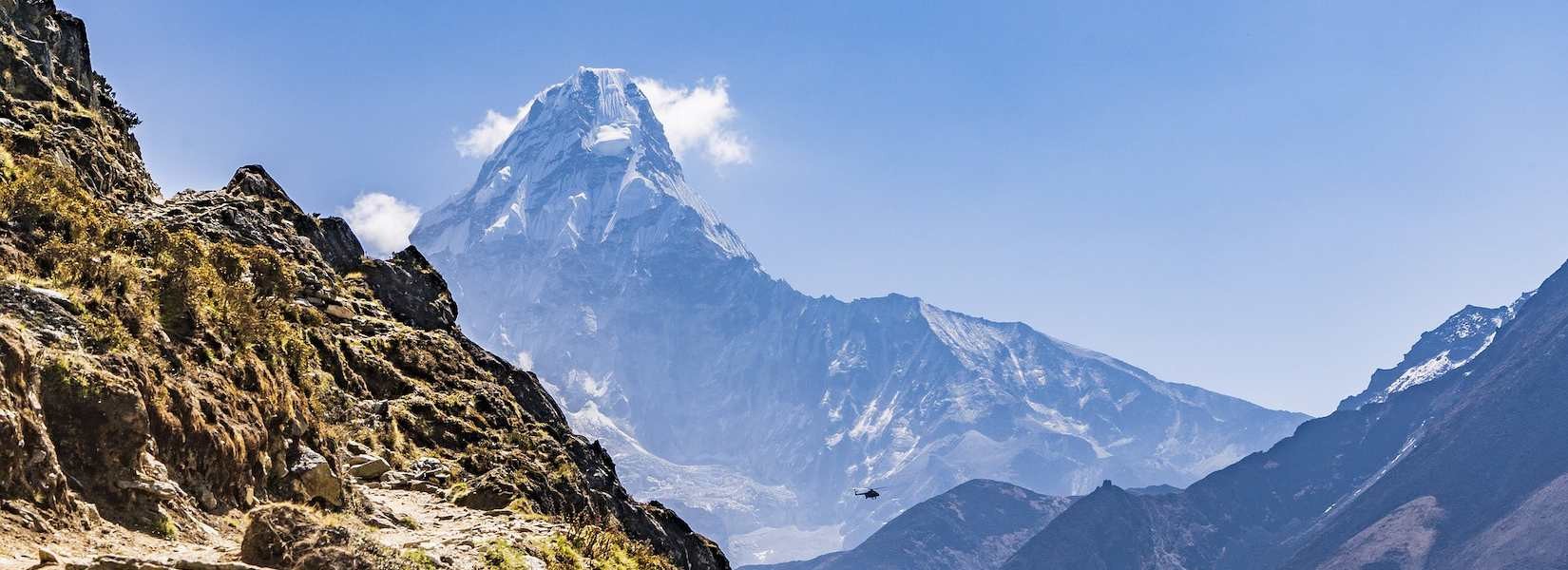
 Image Source:
Image Source: 

 Image Source:
Image Source:  Image Source:
Image Source: 